Rock Garden Ideas For Stunning Outdoor Retreats
Have you ever stood in your yard, staring at a bare patch of soil and felt stuck? The warm earth feels empty and the possibilities feel overwhelming.
Imagine scattering smooth stones, planting succulents (fleshy water-storing plants), and adding a dash of creativity to craft your own peaceful hideaway. We’re going to walk you through three easy rock garden styles you can build this weekend.
First up is a cool alpine slope with soft green moss.
Next, we’ll create a sun-baked desert scene filled with sandy hues and spiky agaves (succulent plants with sharp leaves).
Finally, you’ll learn how to make a cascading hillside oasis where the stones seem to tumble down the rocks like a frozen waterfall.
You’ll pick up simple tips for sketching your garden map, choosing plants and materials, styling each area, and easy-care steps to keep your new sanctuary looking fresh.
Three Rock Garden Inspirations & Roadmap
Imagine stepping out onto your deck on a cool morning. You see a crisp alpine slope made of flagstone steps. Each level holds a dwarf spruce (small evergreen tree) or a tiny pine. It feels like a neat little mountain hush!
Have you ever smelled warm, sun-baked gravel? Picture wide beds of sandy-colored stones. Here and there, sculptural succulents peek through. Agave rosettes. Spiky aloe. They hardly need water. You save gallons and still get that wild desert vibe. So simple.
Now think of your sloped backyard as a hillside oasis. Big rocks hold your soil like a sponge (moisten, squeeze out extra water, then fluff it). Rain won’t wash it away. Between each stone, waves of columbine, lupine, and poppies spill over. Drama on a slope, every level a new burst of color.
In the next section, we’ll cover:
- How to map out your rock garden
- Picking the right plants
- Choosing materials and DIY build steps
- Simple styling tips and care routines
- Advanced tweaks for a garden that shines all year
Layout Planning for Rock Garden Ideas: Structure and Flow
First, take a stroll around your yard, and you’ll feel how the land slopes, where rainwater pools, and which spots soak up the most sun. A gentle incline can turn into a lush rock garden that fits right in. But if your yard drops off sharply, you’ll want to try stone tiers – shallow beds of soil and rocks stacked like steps to keep everything in place. Have you ever seen a hillside garden set up that way? It really makes the view pop.
On flat ground, you’ll want to steer clear of puddles. Spread a layer of gravel (tiny rocks that help water drain) and press it down until it’s firm. Then top it with soil and your favorite stones. For a small rock garden, use a garden hose or string to sketch soft curves, then nestle clusters of stones along each bend. By the way, my dog always checks out new rocks first.
Try these features for a neat, eye-catching rock garden:
- Terraced stone beds that add depth and help stop erosion
- A dry creek bed crafted from blue and gray stones to mimic a flowing stream
- A pebble garden with mixed pebble sizes to define zones and beat back weeds
- A rock retaining wall made of stacked stones, creating cozy pockets for thyme or small planters
- A stepping-stone path of flagstones or large boulders to guide exploration
A front yard can really shine with a mix of these ideas. Add tiny terraces near the porch, lay a pebble border along the walkway, and build a low stone wall by the driveway. On a slope, mini terraces and a stepping-stone path turn a hillside challenge into a charming focal point.
Now you’re ready to stake out each zone. Grab a tape measure, some string, and mark where stones, walls, and paths will go before you pick your plants or gather materials.
Selecting Plants for Rock Garden Ideas: Drought-Tolerant and Alpine Options

Picture this: spiky aloe leaves brushing your fingertips and the warm crunch of pebbles underfoot. You’re building a succulent rock bed on well-drained soil (soil that lets water flow through fast) so water won’t pool. Have you ever felt that sun-baked warmth? It’s magic.
Cacti and succulents (thick, fleshy plants) thrive in rocky spots and barely ask for a drop of water once they settle in. For desert plantings, tuck in rosettes of agave americana and clusters of sedum spectabile. They shrug off long, hot summers and keep your garden looking sharp with almost no fuss.
But on cooler slopes or north-facing walls, alpine species (mountain-loving plants) and dwarf conifers (small evergreen trees) paired with one big stone feel like a crisp mountain ridge at sunrise. Saxifraga (tiny flowering plant) and cushion-forming dianthus (soft, low-growing blooms) nestle into crevices. Their silver needles or gentle pink petals contrast a smooth boulder for a calm, minimalist vibe.
Fill cracks and shallow pockets with moss (tiny green plant that loves moisture) and lichen (tough, slow-growing growth). Creeping thyme (low-growing minty herb) trails over stone edges, letting off a minty scent when you brush past. It holds soil in place and softens hard lines, turning rough rocks into a plush carpet. By spring, tiny purple flowers pop up between stones. Yes!
For movement and pops of color, add tufts of dwarf bottlebrush grass (ornamental grass) that sway in the breeze. Desert spots also welcome blue oat grass (ornamental grass with silvery blades), while sunny pockets call for purple coneflower (drought-resistant perennial). These hardy plants bloom year after year with just a bit of water.
Here are a few favorites:
- Blue oat grass (ornamental grass)
- Purple coneflower (drought-resistant perennial)
- Creeping thyme (low-growing minty herb)
- Dwarf bottlebrush grass (ornamental grass)
By the way, my cat loves sunning on the stones. Back to planning your rock garden, happy planting!
Rock Garden Ideas: Materials and Sourcing for Hardscape Elements
Think of your garden bed as a blank canvas for stones. Grab a big boulder (a large rock) to anchor your design. Have you ever noticed how rough edges catch morning light and double as a comfy seat?
Then tuck in smooth river rock (rounded stones washed by river water) to soften the look. To lay it out, dig a shallow trench. Add landscape fabric (a cloth that stops weeds). Fill it with stones so water drains while weeds stay away.
Gravel (small crushed stones) makes a great rock mulch alternative. It stays put when it rains and won’t wash away like wood chips. Have you tried it? Let’s check out two popular kinds:
| Feature | Gravel | Pea Gravel |
|---|---|---|
| Size | ¼–¾ inch pieces | ⅜–½ inch rounded stones |
| Drainage | Fast | Very fast, but shifts more |
| Cost | Low | Medium |
For a path, stone choice sets the mood. Slate chips (small slate pieces) offer a crunchy sound underfoot and come in deep gray or warm rust colors. Flagstone (flat stone slabs) makes each step feel like a well-worn trail. They’re perfect for guiding bare feet across your garden.
Want a pop of color against the green leaves? Add blue schist (sparkling blue rock) that glistens like a cool sky. Or mix in red lava rock (lightweight porous stone) for a fiery touch. Pale limestone (cream-colored sedimentary rock) blends right in next to a patio or raised bed and pairs nicely with potted flowers.
You don’t have to spend a fortune on fancy stones. Check farms or local construction sites for free or cheap leftovers. Builders often toss extra rocks. Oops, I once forgot to rinse the concrete and ended up with dusty feet, but a quick rinse fixed it.
DIY Construction Tips for Your Rock Garden Ideas: Step-by-Step Guide
Ready to build your own rock garden? A strong start is everything. First, clear the spot with a shovel and smooth the warm earth with a rake. Make sure it’s level so stones won’t wobble when you step on them.
Next, roll out weed barrier fabric (a tough cloth that stops weeds popping up). Overlap the edges by 6 inches to block sneaky sprouts. Inspect it for tears before laying stones. That small step pays off big time later.
Now for drainage. Mix coarse sand (big, gritty grains) with gravel. Pour a two-inch drainage base layer (material that helps water flow away). Tamp it flat until it feels firm underfoot. See water run off smoothly? That’s your first win.
Step-by-Step Construction Outline:
- Mark garden edges with stakes and string.
- Roll out and overlap weed barrier fabric by at least 6 inches.
- Pour a two-inch sand-and-gravel mix.
- Tamp the layer down until it’s firm.
- Sketch a budget plan listing tool and stone costs.
- Practice building rock walls on a small patch first.
- Lean each rock slightly inward for stability.
- Mix equal parts sand, compost (decayed organic matter that enriches soil), and loam.
- Dig small hollows for planting pockets before tucking in herbs.
For planting pockets, blend equal parts sand, compost, and loam. That fluffy mix settles around roots while extra water drains away. Check the tips on best soil for raised garden beds for more on choosing your mix.
When you tuck in sedum or thyme between stones, dig a little pocket. Fill it with your soil blend, then press in the roots snugly. After your walls are built, go back and make sure each plant sits flush with the rocks. So satisfying.
On a tight budget? Hunt for recycled concrete pieces or ask a local farm for free stones. A wheelbarrow and a rubber mallet are all you need to move boulders. Oh, and leave a two-foot path behind walls for shoveling snow in winter, trust me, you’ll thank yourself.
Keep your steps simple and focused. Watch your backyard retreat take shape, one stone at a time. Enjoy!
Styling Rock Garden Ideas: Integrating Features and Focal Points

Picture a simple zen stone arrangement. Start with a layer of raked gravel (small stones) circling a few smooth boulders (large rocks). In a Japanese-style courtyard, those soft lines feel like a slow exhale. Tuck in a hidden pump and you’ve added a little water feature, turning your pebble bed into a quiet fountain murmuring soft ripples.
Try stacking flat stones to build a dry waterfall design. You get that trickle-of-water feel without any plumbing fuss. Then add a tiny fountain, like a shallow basin fed by a copper spout, to make a gentle splash. These small fountain ideas look sweet beside mossy pockets or tucked under low-hanging branches. And when you sneak in another water spot by your seating area, your garden hums with calm.
Bring in a bronze sundial or a carved stone sculpture for a lasting focal point that never needs pruning. These pieces resist rust and rot, so they’re perfect for low maintenance landscaping. You’ll spend more time sipping tea and less time on upkeep.
Finally, invite some pause with an iron bench placed in a shaded hollow. Frame it with tall ornamental grasses to create cozy outdoor seating niches. Have you ever sat just off a winding path and watched the world go by? Those little hideaways feel like secret escapes. Then sprinkle a cluster of solar accent lights under ledges or along stone edges to turn dusk into golden hour glow. Line your walkways with more solar lights to guide you back inside. And pop a few on stone pedestals to highlight your favorite plants. One last water feature near that bench adds the perfect flow to your peaceful retreat.
Maintaining Your Rock Garden Ideas: Care, Troubleshooting, and Seasonal Tasks
Keeping your rock garden happy is easier than you think. Have you ever felt the click of smooth stones under your fingertips? A simple routine stops chores from piling up. Let’s walk through quick seasonal tasks so nothing sneaks by.
Spring tasks:
- Clear fallen twigs, old mulch (a layer of leaves or straw that holds in moisture), and leftover winter debris.
Summer tasks: - Watch the soil and water deeply only when the ground totally dries out.
Autumn tasks: - Rake leaves before they form a soggy mat and block the sun.
Winter tasks: - Tuck in a thin layer of straw mulch (dry stalks that protect roots) and leave room in case snow piles up.
In early spring, sprinkle perennials (plants that come back each year) with a light dose of slow-release nitrogen (plant food that feeds over several weeks). This helps blooms stay strong without gunking up stones with algae.
Want to skip chemical sprays? Invite ladybugs (tiny orange and black beetles) or lacewings (delicate green insects) to snack on aphids (small sap-sucking bugs). Slip behind stones and pluck out slugs, then drop them into a cup of soapy water. If soil feels soggy, mix in fresh blend so water drains away.
Notice puddles or shifting stones? Each spring, lift a few rocks and check the weed fabric (cloth barrier that keeps weeds down). Patch holes and overlap seams by six inches. Top up gravel or slate chips to keep beds level. For low spots, slip in a thin layer of sand to help rainwater flow off.
Oops, I once skipped this check and my stones slid right out of place.
A little attention each season keeps your rocky retreat ready for quiet moments and sunny smiles.
Advanced Rock Garden Ideas: Specialized Styles, Adaptations, and Site Considerations
Grab a simple site checklist and start by watching the sun’s path, noticing where it warms your garden each morning and afternoon. Have you ever spotted a comfy sunny nook? Then test your soil (the mix of sand, clay, and organic bits) by grabbing a handful, does it crunch or stick? Picture how you’ll wheel a wheelbarrow or rent a small loader to place each rock. Oh, and don’t forget to call 811 (the utility locate service) before you dig. It keeps you from hitting hidden gas lines or cables. Finally, note your yard’s slope and where stormwater pools. Checking off each item now means fewer headaches later.
Before you haul in big boulders or install a pond pump (a small motor that moves water), peek at local permit rules. Some towns need a stamp of approval for retaining walls or water features. A quick call to town hall saves you from fines or having to redo work. Trust me, one short chat is worth it.
Got a sloped yard? Embrace it. On steep banks, try tiered slope landscaping. Think of stone and soil shelves stacked like giant steps to hold your plants tight. They’re perfect for alpine plants (cold-loving blooms) or patches of creeping thyme to soften edges. Even a gentle incline can use a ledge to stop gravel from washing away and to create mini planting spots. No matter how wavy your grade is, a solid slope plan is your garden’s backbone.
Those tiers do more than look nice. They slow down heavy rain so your soil doesn’t wash off. I like adding low ground covers (plants that spread close to the earth) or ornamental grasses to each shelf, they weave waves of green between stones. And dropping some sedum (a water-storing succulent) into cracks adds color and extra hold when the rains come.
When shopping for rocks, think eco-friendly. Check salvage yards for broken pavers or ask neighbors if they’ve got extra flagstones. Local demolition sites sometimes sell blocks cheap. You end up with upcycled stone, maybe a chipped granite column or an old millstone as a cool centerpiece. Using salvaged materials cuts cost and waste. Win-win.
Hey city gardeners, you can rock this too. Build a container rock garden in pots or balcony planters. Even a windowsill can host some pebbles, a fist-sized boulder, and a tiny aloe. It’s perfect on your deck, fire escape, or porch step, still rugged and charming. If a hillside waterfall feels out of reach, hiring a pro landscaper can manage plumbing, permits, and heavy stone lifts for you. Easy peasy.
Final Words
From the terraced alpine slope to the warm-toned desert gravel scene and the wildflower-layered hillside retreat, each setup is low-work and high-impact.
The step-by-step guide walks you through planning the layout, picking low-water plants, sourcing rocks, building your hardscape (stone elements), adding style with seating or lights, and simple seasonal care.
Now it’s your turn to pick a style, roll up your sleeves, and watch your space transform with rock garden ideas that bring lasting charm.
FAQ
How do I create a simple rock garden?
Creating a simple rock garden begins with choosing a level, well-drained spot. Lay landscape fabric, arrange stones in groupings, then add a mix of pebbles and soil. Plant low-water succulents or alpine groundcovers.
What is the 70/30 rule in rock gardening?
The 70/30 rule in rock gardening suggests using about 70% rocks and gravel for hardscape, while dedicating 30% of surface space to soil and plants for balanced aesthetics and drainage.
What should I put down before laying rocks?
Before laying rocks, spread landscape fabric to block weeds and improve drainage. Add a thin layer of coarse sand or crushed gravel to level the base and prevent stones from shifting.
What plants grow well in a rock garden?
Succulents, alpine perennials, and drought-tolerant groundcovers like creeping thyme, sedum, and ornamental grasses thrive in rocky, well-drained soils while adding texture and color to your garden.
What are some front yard rock garden ideas?
Front yard rock garden ideas include layering small flagstone terraces with dwarf conifers, creating a dry creek bed framed by river pebbles, or clustering boulders with alpine flowers for low-maintenance curb appeal.
How can I design a rock garden without grass?
Designing a rock garden without grass involves using landscape fabric over soil, covering with gravel or decorative stones, and tucking in hardy, low-water plants to fill crevices without turf.
What are some rock garden ideas for kids?
Rock garden ideas for kids could include painted stepping-stone paths, miniature fairy garden elements among pebbles, simple rock-stack challenges, or sensory zones with smooth river rocks and colorful gravel.
What are natural rock garden ideas?
Natural rock garden ideas mimic mountain slopes by arranging weathered boulders and native stones, planting wildflowers, moss, and lichen in crevices, and letting irregular shapes create an organic, wild-look landscape.
What are rock garden ideas without plants?
Rock garden ideas without plants focus on stone textures: stack varied boulders, create mosaic pebble patterns, install dry creek beds, or sculpt driftwood features among gravel for pure hardscape interest.


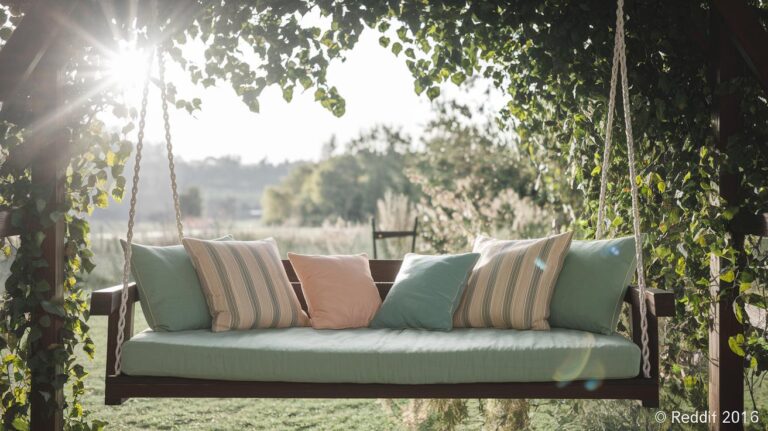
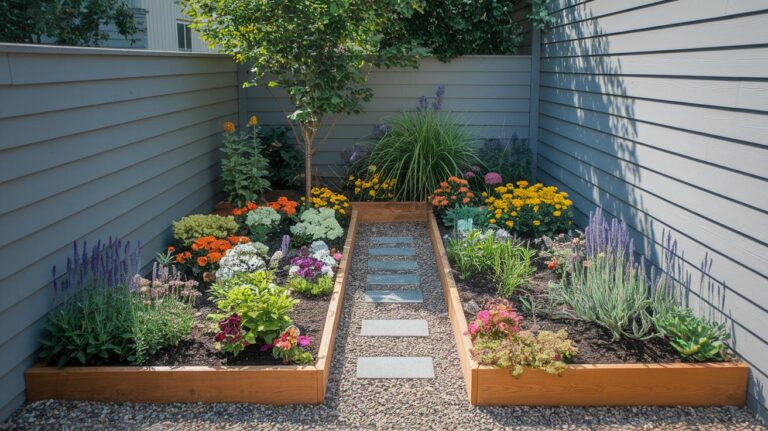

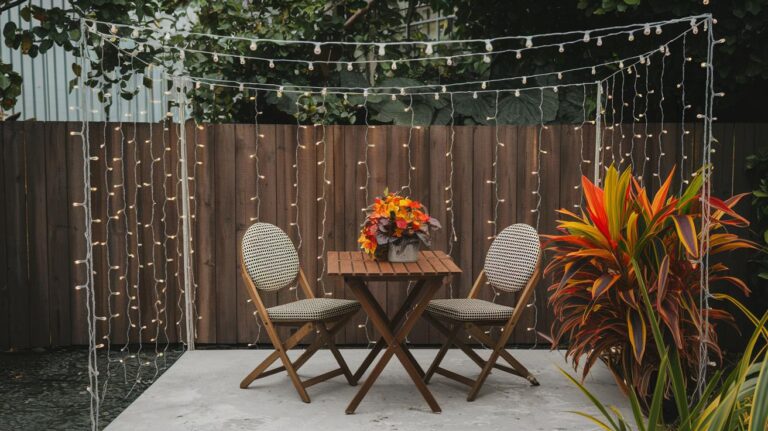
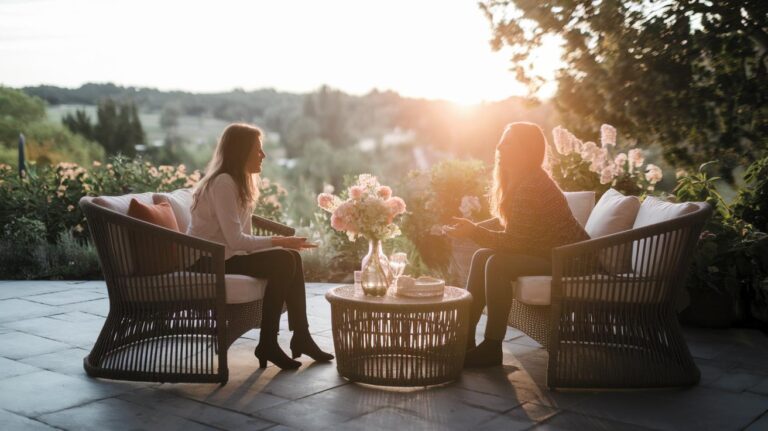
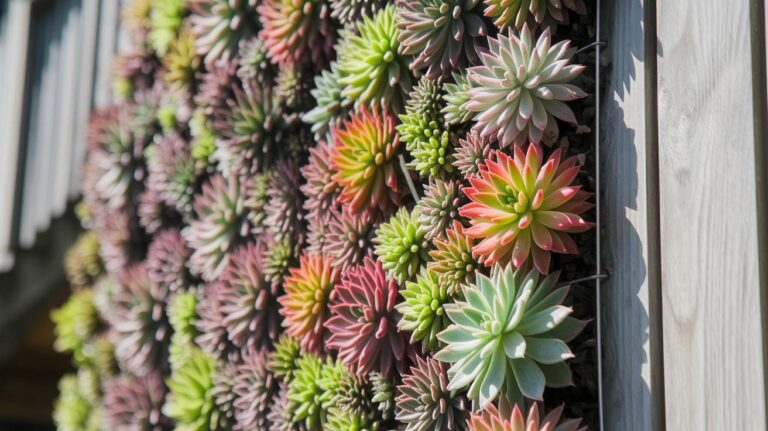
2 Comments